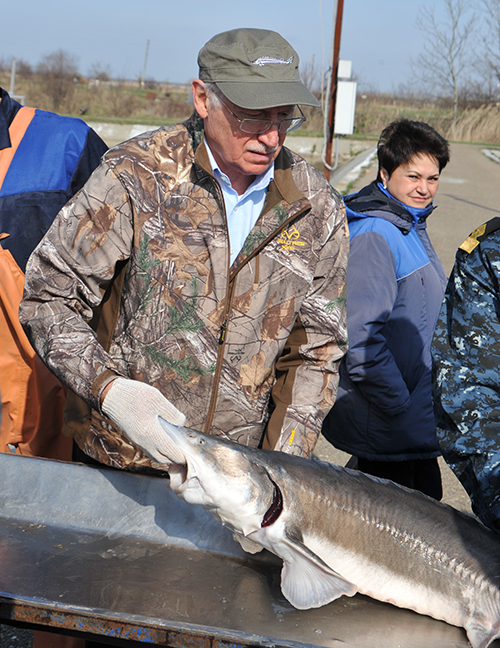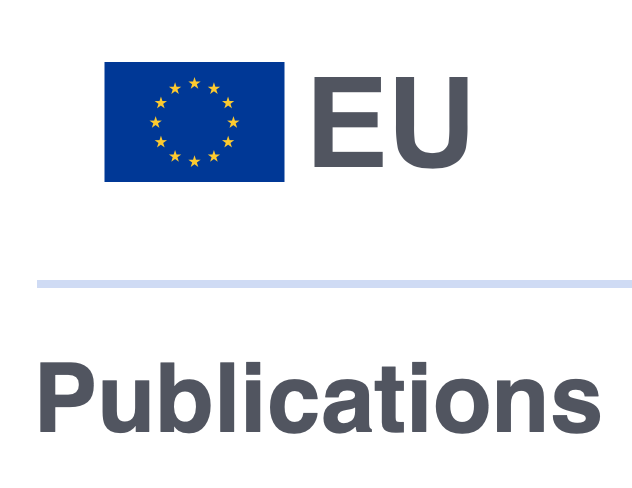Release of farmed mature breeders of ship and sterlet sturgeon in Kuban River and Sea of Azov in March-April 2020
The State Regional Centre for Sturgeon Gene Pool Conservation “Kubanbioresursi” of the Ministry of Natural Resources of the Krasnodar Region (Russia), member of the WSCS, has been the one and only organization that annually releases – into the natural water bodies – different age-graded hatchery reared specimens of all five Azov and Black Sea sturgeon species, obtained from the farmed broodstock at the Centre in the frame of the environmental program of the Krasnodar Region.
“One of the world’s largest living genetic bank of sturgeon fish (numbering about 10 thousand individuals) has been created in the Center. Such a high number of multi – ages brood fish ensures the conservation and the feasibility of efficient stock enhancement of all species of sturgeon that previously inhabited in the Kuban river and Sea of Azov basin,” – noted the vice-governor of the Krasnodar Region, Sergei Boldin.
At the same time, in 2020 the release of sturgeons into the Kuban River is special: different age and size graded specimens of beluga, stellate and Russian sturgeon, ship and sterlet during almost four months will be releasing in different sections (corresponding to the species and age specific peculiarities of the fish) of rivers: Kuban (from the mouth to the upper reaches), Protoka, Laba and the Krasnodar Water Reservoir and the Black Sea (in cooperation with the All-Russian Children’s Center “Orlyonok”).
The 1st Deputy Chairman of the Committee for Ecological Safety and Natural Resources of the Krasnodar Region Parliament and a regular participant of sturgeon releases into the Kuban River, Andrei Buldin emphasized: “For the first time, not only large viable sturgeon of endangered species, but as well mature females and males have been released into the Kuban River nearby the natural spawning grounds, that will allow in the future (with regular releases) to restore the natural propagation of sturgeon in the Kuban River, that has not been observed in the river for about 35 years”.
The release – of adult fish with individual tags (microchips) those underwent the molecular-genetic testing, ultrasound diagnostics of the status of the reproductive system and internal organs – into region’s water bodies is one of the elements of an environmentally friendly and sustainable strategy for the sturgeon hatchery stock enhancement that are in danger of extinction.
This will allow in the future to assess the effectiveness of hatchery stock enhancement, depending on the site and time of fish release, as well as on their size and state of maturity. Distributed in time and space of the water area of the river, the release of viable fish can significantly reduce food competition and prevent the possible impact of negative factors (predators, illegal fishing, pollution).
“It is especially important that the Center’s broodstock has been held in a sturgeon farm located in the lower pool of the Krasnodar Water Reservoir, thus allowing to supply water from the native Kuban River relatively close to past sturgeon natural spawning grounds. Thus, both breeders and newly matured individuals get fully adapted to the temperature and hydrochemical regime of the Kuban River, including spawning temperatures and the expected spawning time of released fish in natural conditions. In addition, the Center’s broodstock is held much higher than the main rice growing area of Russia and discharge of drainage and collector waters into the Kuban River.
“The Center improves the modern biotechnology of controlled reproduction of sturgeons, develops and implements new methods for breeding and rearing of rare sturgeon species adapted to the modern environmental conditions of the Azov Sea basin. This regional program reported by the Director of the Center, Vice President of the Russian Sturgeon -culturists Union (RSCU), professor Mikhail Chebanov was highly evaluated at the conference “Russian sturgeon conduction – 2019” held in autumn 2019 in Moscow. It was dedicated to the 150th anniversary of sturgeon culture in Russia, organized by the Federal Agency for Fisheries along with the RSCU” said Deputy Minister of Natural Resources of Krasnodar Region, Oleg Solyonov.
The first stage of sturgeon release by the Regional Center “Kubanbioresursi” in 2020 was carried out on March 11–13. For the first time in Russia at the mouth of the river Protoka (settl. Achuyevo) and the Sea of Azov were released 160 specimens of beluga with an average weight of 11.8 kg (10 to 16 kg) and age from 3 to 5 years. The release of these already sufficiently salt resistant fish in the immediate vicinity of the Sea of Azov excludes the possibility of capture of these largest and most valuable fish (unfortunately, of the rarest species) in the river by poachers.
The second stage of sturgeon release in 2020.
In April 23 in the largest Upper tributary of the Kuban River – in the Laba River near the city of Kurganinsk, 26 specimens of sexually mature females and males of ship sturgeon and 90 ones of sterlet were released in order to accelerate the restoration of natural propagation of sturgeon in the Kuban river basin.
The choice of this first site of ship release in the area of its natural spawning grounds and above the main dams and water intakes on the Kuban river was not accidental. Kuban river flow regulation extremely negatively affected the state of populations of stellate and Russian sturgeons, and beluga and deprived them of natural propagation for more than 35 years.
At the same time, the construction of a large water reservoir created more favorable conditions for the establishment of self-reproducing populations of sterlet and ship sturgeons, which have access to sites of natural spawning in the upper reaches of the river. The high food base of the Krasnodar Water Reservoir and in the middle and lower reaches of the Kuban river has not been used by ichthyofauna to full extent and will completely ensure the nutritional needs of the progeny of the reintroduced ship and sterlet sturgeons, that is especially important during the feeding of juveniles.
Sources in the media (media): https://dropmefiles.com/lGWO4
Beluga:
http://www.kubanbioresursi.ru/news-42
http://www.mprkk.ru/ministerstvo/press-sluzhba/news/i/o-vypuske-molodi-osetrovyh
https://ki-news.ru/2020/03/13/na-kubani-vypustili-v-reku-molodyh-osetrovyh/
http://pervoe.fm/news/v-slavyanske-na-kubani-vypustili-100-osobej-krasnoknizhnoj-belugi-v-reku/
https://kuban24.tv/item/v-slavyanske-na-kubani-vypustili-100-osobej-krasnoknizhnoj-belugi-v-reku
https://www.kuban.kp.ru/online/news/3796055/
https://www.kuban.kp.ru/daily/27104/4179032/
Sterlet and ship sturgeons:
http://www.kubanbioresursi.ru/news-43
https://www.kubzsk.ru/news/11746/





